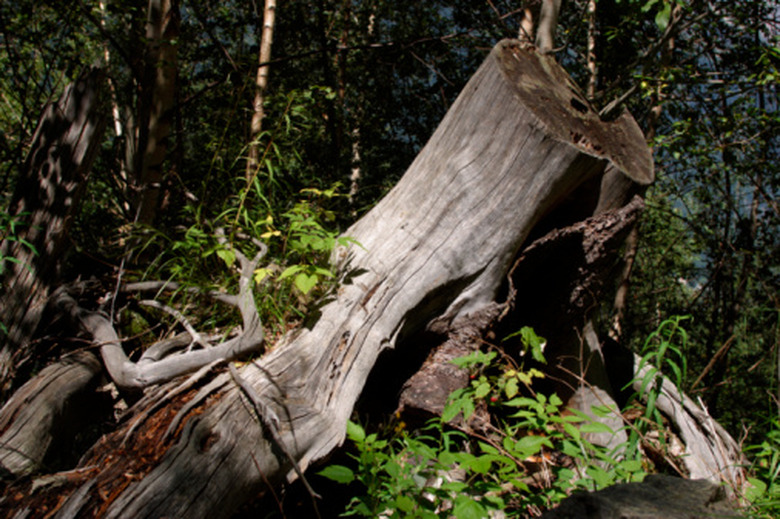How To Kill A Locust Tree
Black locust trees belong to the legume family and are easily identified by their showy flowers and pungent scent. The cream-colored, pea-like blooms grow in long clusters from May to June. Black locusts grow quickly but can be easily injured by locust borers, pests that weaken the tree until it's easily blown over.
Black locust trees belong to the legume family and are easily identified by their showy flowers and pungent scent. The cream-colored, pea-like blooms grow in long clusters from May to June. Black locusts grow quickly but can be easily injured by locust borers, pests that weaken the tree until it's easily blown over. If your tree is affected by a disease or simply in a bad spot, you can kill it to remove it.
Step 1
Strip the bark off locust trees in summer to kill them. Insert a knife or sharp end of a crowbar into the lower portion of the tree trunk, a couple of feet off the ground. Pry a half-inch-thick piece of bark and wood off the trunk, removing a 6-inch-wide section. This method allows the hot sun to dry out the tree and eliminate the transport system carrying sugars from the leaves to the roots.
- Black locust trees belong to the legume family and are easily identified by their showy flowers and pungent scent.
- Black locusts grow quickly but can be easily injured by locust borers, pests that weaken the tree until it's easily blown over.
Step 2
Leave the tree standing for one year, during which the roots will use up stored sugar and starve to death. Cut off new shoots as they grow because they will encourage the transportation of new sugars to the roots.
Step 3
Cut the tree down to a stump that is about a foot from the ground. Cut shoots where they meet the stump with loppers or spray with an herbicide containing glyphosate to keep new locust trees from growing.
Umbrella Locust Tree
The umbrella locust tree is a dwarf form of locust tree that reaches 20 feet in height. It has an umbrella-shaped, dense canopy, with 6- to 14-inch, dark green leaves and multiple leaflets on twigs. The trees are drought and salt tolerant, making them good trees for dry or seaside areas. They are hardy in U.S. Department of Agriculture zones 3 to 8. Umbrella locust trees produce large, cream-colored, fragrant clusters of pea-like flowers that produce 2 to 4-inch-long dark red, brown, or black seed pods. Frisia has golden yellow leaves and grows up to 50 feet tall. Diseases that affect locust tree varieties include canker, leaf spot, and powdery mildew. Although it's a native tree, it is on the federal list of invasive species. The large, fragrant flowers compete with other plants for pollination from bees.
- Leave the tree standing for one year, during which the roots will use up stored sugar and starve to death.
- Cut shoots where they meet the stump with loppers or spray with an herbicide containing glyphosate to keep new locust trees from growing.
Things Needed
- Knife or crowbar
- Loppers
- Herbicide (optional)
Tip
If you use herbicide, mix in a spray bottle according to package instructions. Herbicides with glyphosate are available at garden or home improvement centers.
